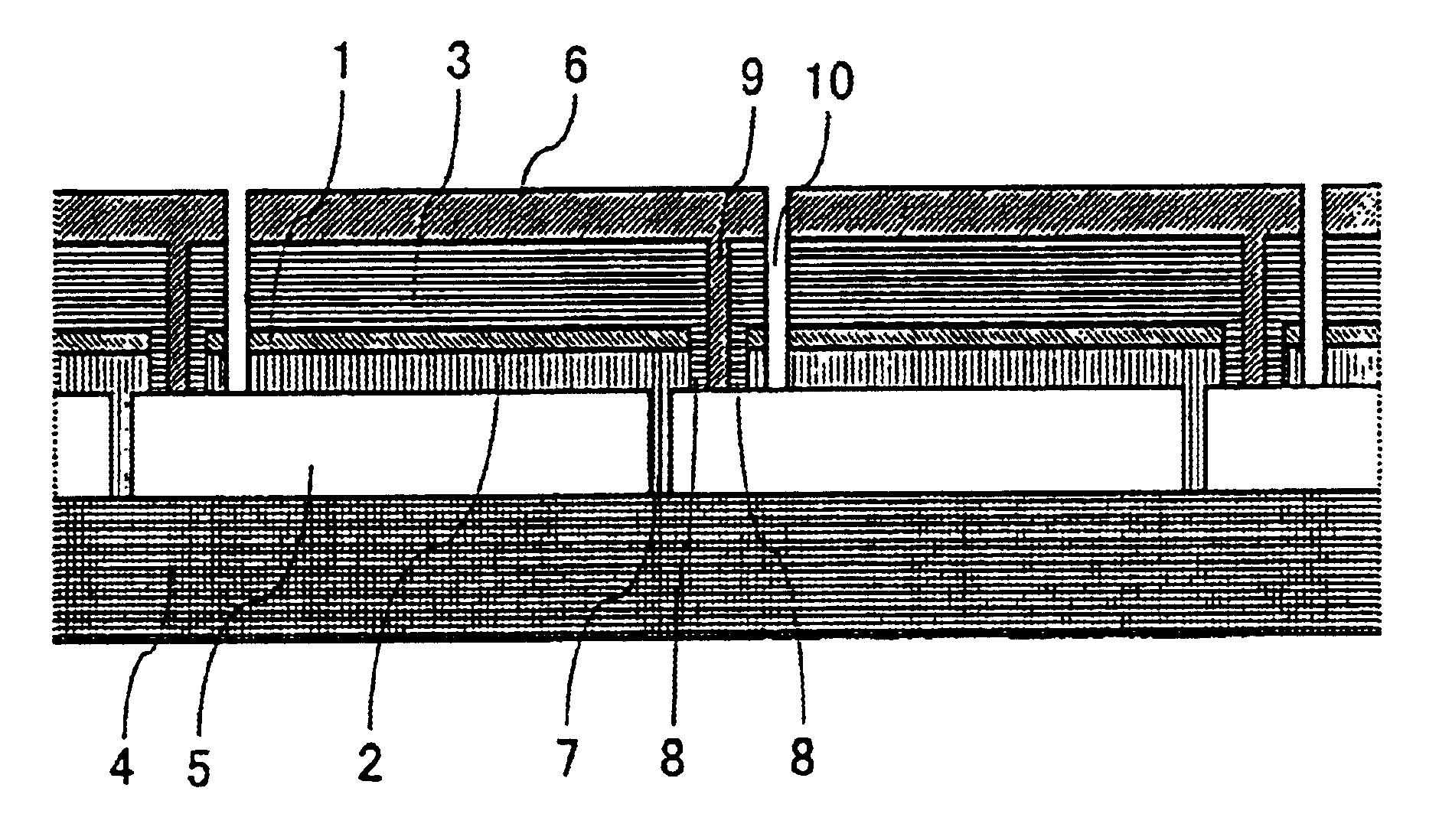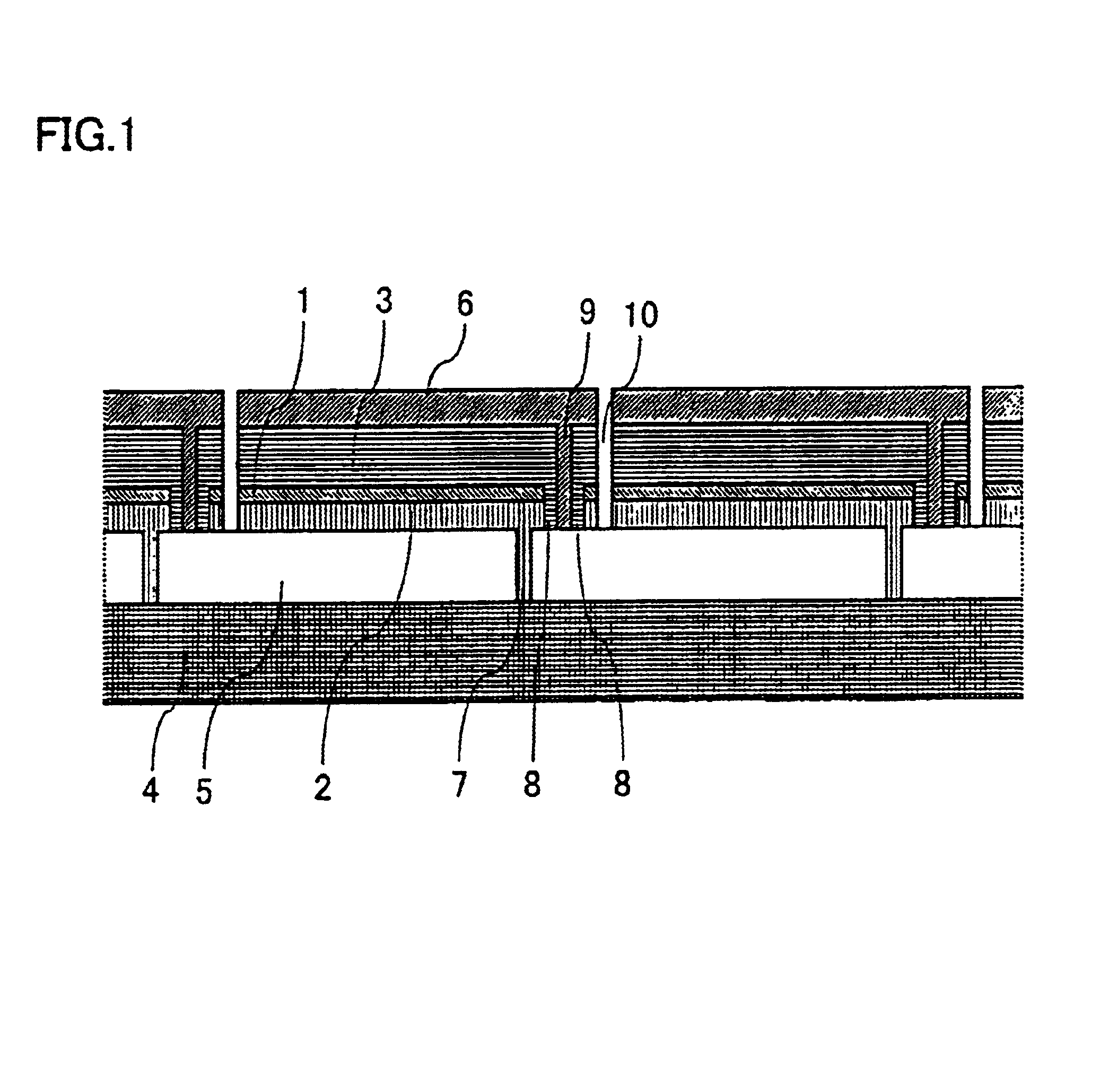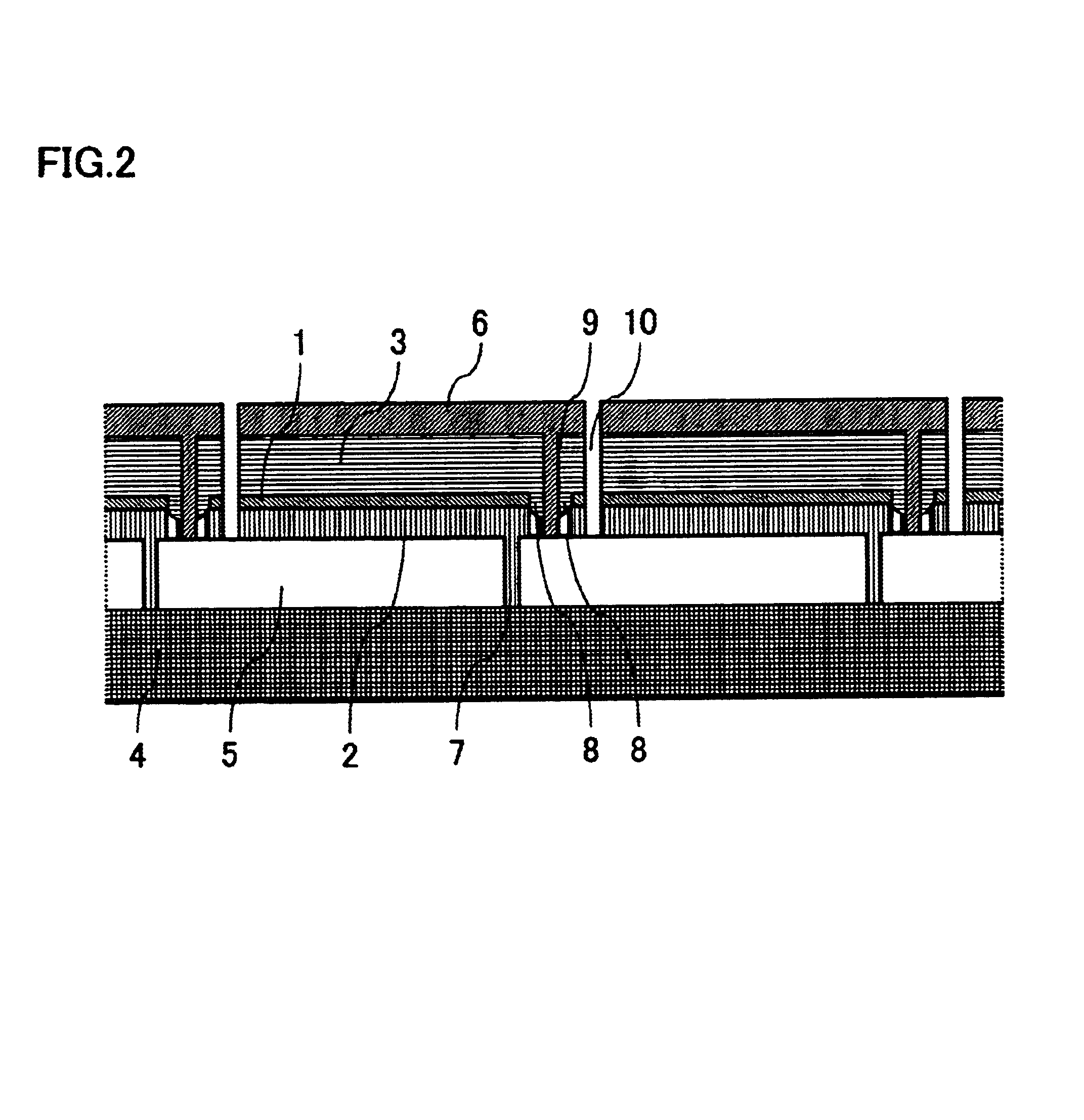Solar battery cell and manufacturing method thereof
a solar cell and battery technology, applied in the field of solar battery cells, can solve the problems of large number of processes required for formation of stacked structures, inability to inability to completely absorb sunlight in full wavelength, etc., and achieve excellent power-generating efficiency per unit area, high reliability, and the effect of increasing the scattering
- Summary
- Abstract
- Description
- Claims
- Application Information
AI Technical Summary
Benefits of technology
Problems solved by technology
Method used
Image
Examples
example 1
Example 1 is described with reference to FIG. 1. FIG. 1 shows a schematic cross section of the solar battery cell made in Example 1.
Firstly, a glass substrate having a thickness of about 4.0 mm and a substrate size of 650 mm×910 mm is prepared as an insulative transparent substrate 4. A transparent conductive film of SnO2 (tin oxide) is deposited on insulative transparent substrate 4 by thermal CVD, to form a front electrode 5.
Next, the fundamental wave of YAG laser is used to pattern front electrode 5. That is, laser beam is irradiated from the insulative transparent substrate 4 side to divide front electrode 5 into rectangular portions to form a front electrode separating line 7.
Thereafter, the substrate is subjected to ultrasonic cleaning with purified water. Semiconductor films are then stacked on front electrode 5 and filled inside front electrode separating line 7 by plasma CVD to form a photoelectric conversion layer as an upper cell 2. Upper cell 2 thus formed is the photoel...
example 2
A solar battery cell was made in the same manner as in Example 1, except that the shape of intermediate transparent conductive film separating line 8 was changed to a curved surface. As a result, a solar battery cell (II) having the structure shown in FIG. 2 was obtained.
A solar simulator was used to carry out performance evaluation of the solar battery cell (II) thus obtained (substrate size: 650 mm×910 mm). The measurement results at AM 1.5 (100 mW / cm2) were Isc: 0.936A, Voc: 75.6 V, F.F.: 0.71, and Pmax: 50.2 W.
PUM
 Login to View More
Login to View More Abstract
Description
Claims
Application Information
 Login to View More
Login to View More - R&D
- Intellectual Property
- Life Sciences
- Materials
- Tech Scout
- Unparalleled Data Quality
- Higher Quality Content
- 60% Fewer Hallucinations
Browse by: Latest US Patents, China's latest patents, Technical Efficacy Thesaurus, Application Domain, Technology Topic, Popular Technical Reports.
© 2025 PatSnap. All rights reserved.Legal|Privacy policy|Modern Slavery Act Transparency Statement|Sitemap|About US| Contact US: help@patsnap.com



